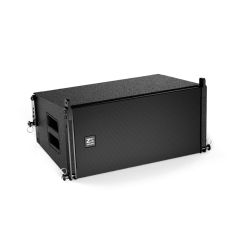How to make outdoor pa system selection perfectChoosing the correct outdoor PA requires careful consideration of many critical factors that affect performance, reliability and overall cost effectiveness. Of course, performance is still at the top of our minds. For most outdoor use, in which you are relying on sound to cross expansive space and/or fool with a lot of ambient noise (such as golf tournaments) having something higher wattage that is portable simply can not cut it. In general, p/a systems in the 1-2K-watt range do fine for an outdoor setting of this sort--allowing your sound to reach most anywhere without compromising quality.
It is also too durable in the changing weather instances. Outdoor Public Address Systems are exposed to elements such as rain,wind and fluctuations in temperature. IP ratings are a way to measure how well something is resistant against water and dust. For example, a rating of IP65 means the system is well shielded from dust and can even withstand low-pressure water jets to cope with variable weather conditions. It is clear to see how important durability can be when it comes to something as large scale an open air event like a music festival, with the near loss of a system due to exposure in such instances not only resulting in possible financial disaster but also reputational damage.
Another important factor is the speaker dispersion pattern. Outdoor venues suffer from a lack of walls to bounce sound off. It has wide dispersion patterns covering a bigger area with less speakers required, saving costs. Take large outdoor events such as festivals and the like; for these line array systems are ideal because they have this vast vertical (and horizontal) dispersion that can easily throw huge distances with relatively few units. This saves you money, not only on your initial investment but also in terms of ease of use and transportation.

It already is, especially in outdoor settings with very long gaps between items and indoor when applied to large buildings cable management becomes complex (with everything outdoors or satellites the greater distances setup signal loss issues as well). Shielded, insulated proper quality cable only should be used so signal integrity can preserve over a long distance run. In addition, many wireless microphone systems work in the UHF range to minimize interference with other equipment more typical of outdoor environments. The Shure ULX-D digital wireless system, for example, operates in the UHF spectrum and transmits its audio signal up to 100m with no compromise on your sound quality making it widely used at outdoor events.
Battery life and portability also needs to be considered, as the device will need to run on battery in remote areas where power sources may be limited. Portable systems with built-in batteries, like the Bose S1 Pro (shown), deliver as many as 11 hours on a single charge for outdoor weddings and public speaking opportunities that demand practicality.
It can never be stressed enough when it comes to security. Here there is always monsters and risks of large numbers at outdoor events where theft or tampering with expensive gear can easily take place. This can be partly addressed through the use of high-quality lockable cases and mounts, which enhance security (as will alarm installations); on-site personnel or surveillance systems are more layers to overcome. For high-profile events like political or protest rallies, the cost of security measures can even reach up to 15% of the total budget—an amount that makes this aspect very critical for sure.
The focus on sound quality in outdoor environments is something which industry experts frequently stress. The difficulties of outdoor sound reinforcement are well publicised, and a man who has spent much time addressing them is celebrated sound engineer Dave Rat — known for his work with the likes of Red Hot Chili Peppers. According to him, "a properly calibrated outdoor PA system is the end all be all for an audience," citing tuning and set optimization as a necessity in open-air environments.
Using data from former events to design an outdoor PA system is also helpful. For instance, those behind the Coachella Valley Music and Arts Festival have continuously modified their audio designs in response to audience suggestions resulting a slight increase of sound quality along with area covered each year. This path allows the outdoor pa system to be continually refined in response to changing large-scale open air event requirements.
